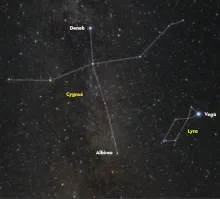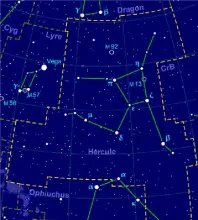Constellation Cygnus
Cygnus, also known as the Northern Cross, is a prominent constellation in the northern sky. Its name is Latin for "swan," and it is one of the most easily recognizable constellations due to its cross-like shape. Cygnus lies along the plane of the Milky Way, making it rich in stars and deep-sky objects. The constellation spans a large area and is best viewed during the summer and early autumn months


